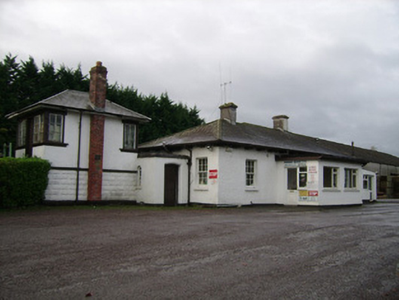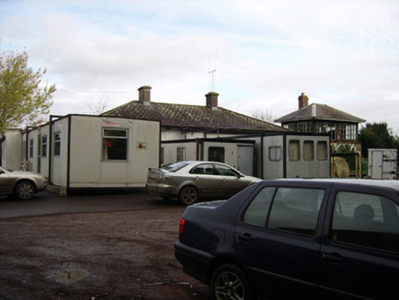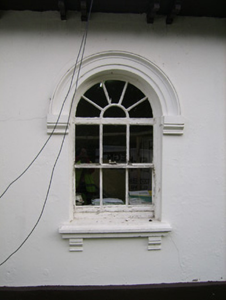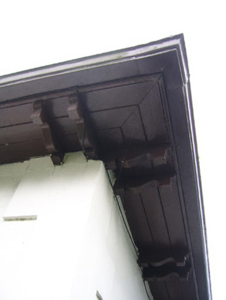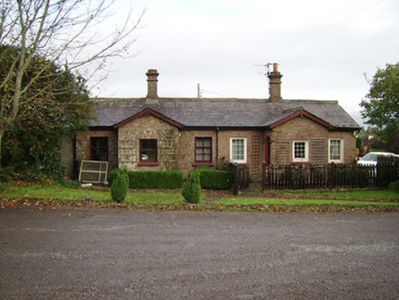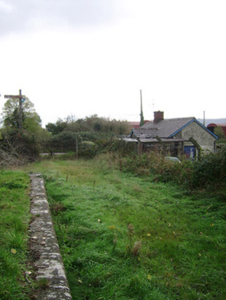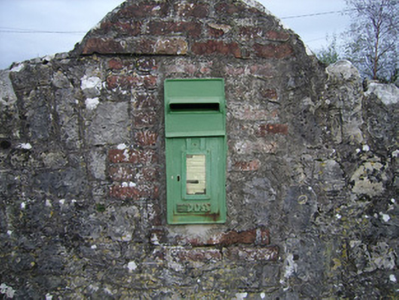Survey Data
Reg No
20903404
Rating
Regional
Categories of Special Interest
Architectural, Social
Original Use
Railway station
In Use As
Office
Date
1855 - 1865
Coordinates
165461, 100286
Date Recorded
01/11/2006
Date Updated
--/--/--
Description
Detached three-bay single-storey former railway station, built c. 1860, with flat-roofed porch linking to later signal box, and having recent flat-roofed additions to north, south and west elevations. Now in use as office. Hipped slate roof with overhanging eaves supported by carved timber brackets and having rendered chimneystacks. Smooth rendered walls with raised render quoins. Square-headed window openings with six-over-six pane and four-over-four pane timber sliding sash windows to north elevation. Round-headed openings to former trackside, south, elevation with rendered hood-mouldings, sills supported on brackets and three-over-three pane timber sliding sash windows with spoked fanlights. Porch has camber-headed door opening with chamfered surround and timber battened door, and round-headed one-over-one pane timber sliding sash window. Limestone edging to platform to south side of station. Single-storey former station master's house to east. Former level crossing with remains of timber gates to east. Cast-iron pedestrian gates, signal post and single-storey level crossing attendant's house and brick-built former railway worker's houses to north. Goods shed to west. Rubble stone wall to east. Cast-iron letter box to site.
Appraisal
This railway station is part of a scattered railway complex and is significant for its historical association with the former railway line constructed in 1860 to service the Mallow-Fermoy line and later connected with the Waterford-Rosslare line. The building retains fabric such as sash windows, bracketed slate roof and render details such as quoins, hood-mouldings and sills. The platform elevation is enlivened with decorative round-headed windows. The station complex retains a number of ancillary features and buildings and forms an important part of the social and economic history of the area.

